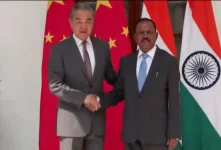- Views: 4K
- Replies: 22

India's decision to retire its aging MiG-27 fleet without replacing them with the Russian Su-34 Fullback, despite having a substantial number of Su-30MKIs, has stirred discussions in defence circles. Several interconnected factors, including operational needs, financial considerations, and strategic objectives, underpin this choice.
While the Su-34 is a formidable strike aircraft with a vast payload, advanced avionics, and long-range precision strike capability, the Indian Air Force (IAF) already fulfills its operational requirements with the Su-30MKI, a versatile multi-role fighter capable of air-to-air and air-to-ground combat. The proven effectiveness of the Su-30MKI in various roles has reduced the urgency for a dedicated strike platform like the Su-34.
The Su-30MKI's strengths lie in its advanced avionics, diverse weaponry, and mid-air refueling capability, which extends its operational range and versatility. The aircraft's established track record in the IAF has made it a trustworthy choice to take over missions previously performed by the MiG-27, eliminating the immediate necessity for a platform like the Su-34.
Moreover, the Su-34's side-by-side seating arrangement for pilots differs from the Su-30MKI's tandem configuration. Transitioning pilots to this new setup would necessitate extensive retraining, impacting resources. Continuing with the Su-30MKI's existing training procedures ensures smoother transitions and efficient resource allocation.
Financial aspects significantly influenced the decision. Acquiring new aircraft entails substantial costs, including purchase, maintenance, training, and fleet integration. The Su-34, as a specialized strike aircraft, would have demanded additional investment in infrastructure, training, and logistics, further escalating expenses.
In contrast, India possesses a considerable Su-30MKI fleet, and maintaining a larger fleet of a single aircraft type benefits from economies of scale. Optimizing maintenance and training for the Su-30MKI fleet offers a more cost-effective solution than introducing a new aircraft type with associated costs.
Strategically, India prioritizes developing indigenous defence capabilities, including the Tejas Mk2. Investing in foreign platforms like the Su-34 could divert resources and attention from these domestic programs. Focusing on the Su-30MKI and advancing indigenous projects supports India's goal of building a self-reliant defence industry.
Additionally, integrating a new aircraft type complicates fleet management, logistics, and maintenance. The IAF already manages a diverse fleet, and adding another type would necessitate new support systems, supply chains, and training programs. Streamlining the fleet by relying more on the Su-30MKI simplifies logistics and boosts operational efficiency.
In conclusion, India's decision to acquire more Su-30MKIs instead of Su-34s aligns with the nation's aspirations for self-reliance in defence while optimizing existing resources and ensuring a smooth transition until the indigenous Tejas Mk2 is fully operational.



